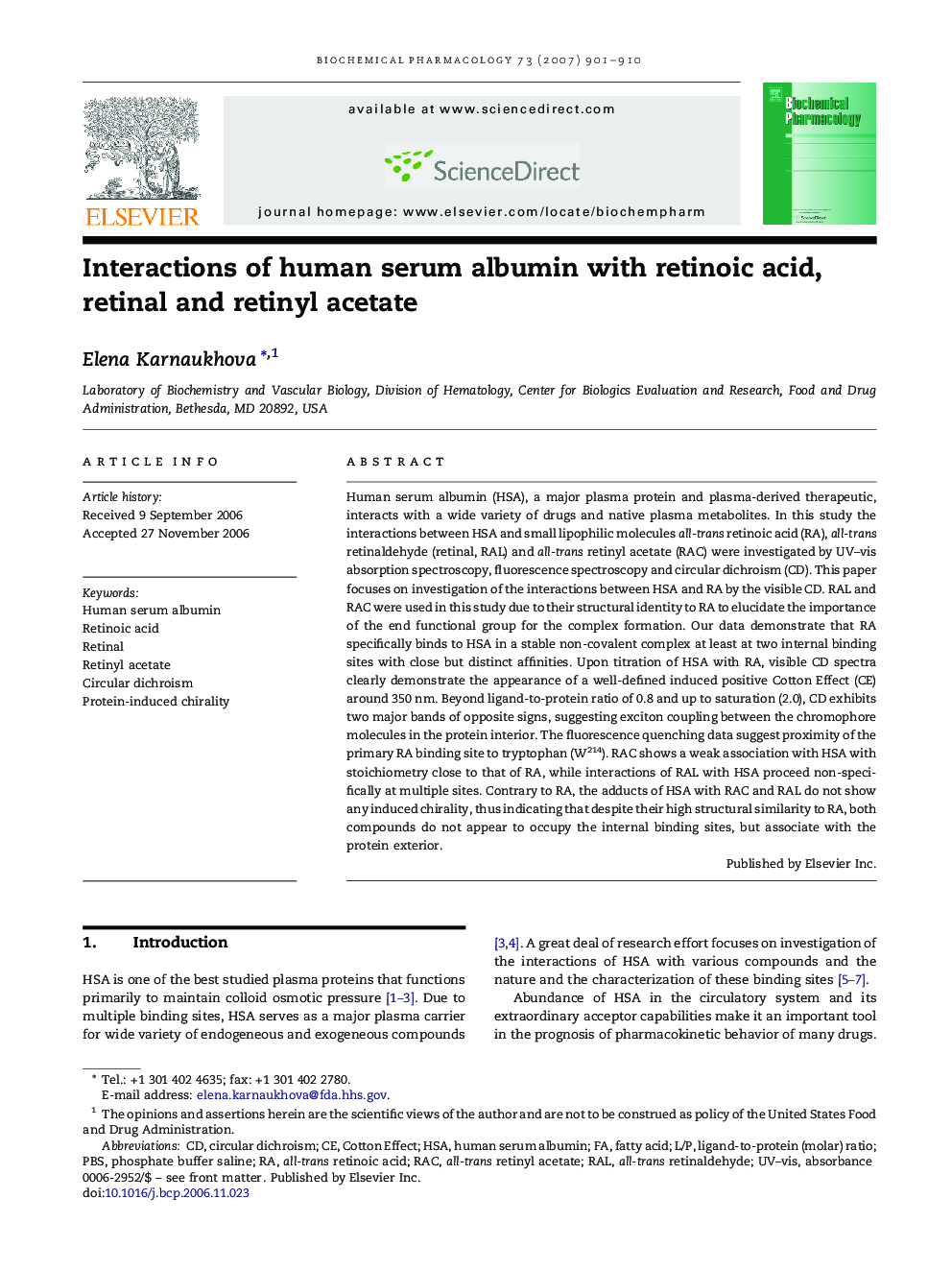| کد مقاله | کد نشریه | سال انتشار | مقاله انگلیسی | نسخه تمام متن |
|---|---|---|---|---|
| 2515068 | 1118499 | 2007 | 10 صفحه PDF | دانلود رایگان |

Human serum albumin (HSA), a major plasma protein and plasma-derived therapeutic, interacts with a wide variety of drugs and native plasma metabolites. In this study the interactions between HSA and small lipophilic molecules all-trans retinoic acid (RA), all-trans retinaldehyde (retinal, RAL) and all-trans retinyl acetate (RAC) were investigated by UV–vis absorption spectroscopy, fluorescence spectroscopy and circular dichroism (CD). This paper focuses on investigation of the interactions between HSA and RA by the visible CD. RAL and RAC were used in this study due to their structural identity to RA to elucidate the importance of the end functional group for the complex formation. Our data demonstrate that RA specifically binds to HSA in a stable non-covalent complex at least at two internal binding sites with close but distinct affinities. Upon titration of HSA with RA, visible CD spectra clearly demonstrate the appearance of a well-defined induced positive Cotton Effect (CE) around 350 nm. Beyond ligand-to-protein ratio of 0.8 and up to saturation (2.0), CD exhibits two major bands of opposite signs, suggesting exciton coupling between the chromophore molecules in the protein interior. The fluorescence quenching data suggest proximity of the primary RA binding site to tryptophan (W214). RAC shows a weak association with HSA with stoichiometry close to that of RA, while interactions of RAL with HSA proceed non-specifically at multiple sites. Contrary to RA, the adducts of HSA with RAC and RAL do not show any induced chirality, thus indicating that despite their high structural similarity to RA, both compounds do not appear to occupy the internal binding sites, but associate with the protein exterior.
Journal: Biochemical Pharmacology - Volume 73, Issue 6, 15 March 2007, Pages 901–910